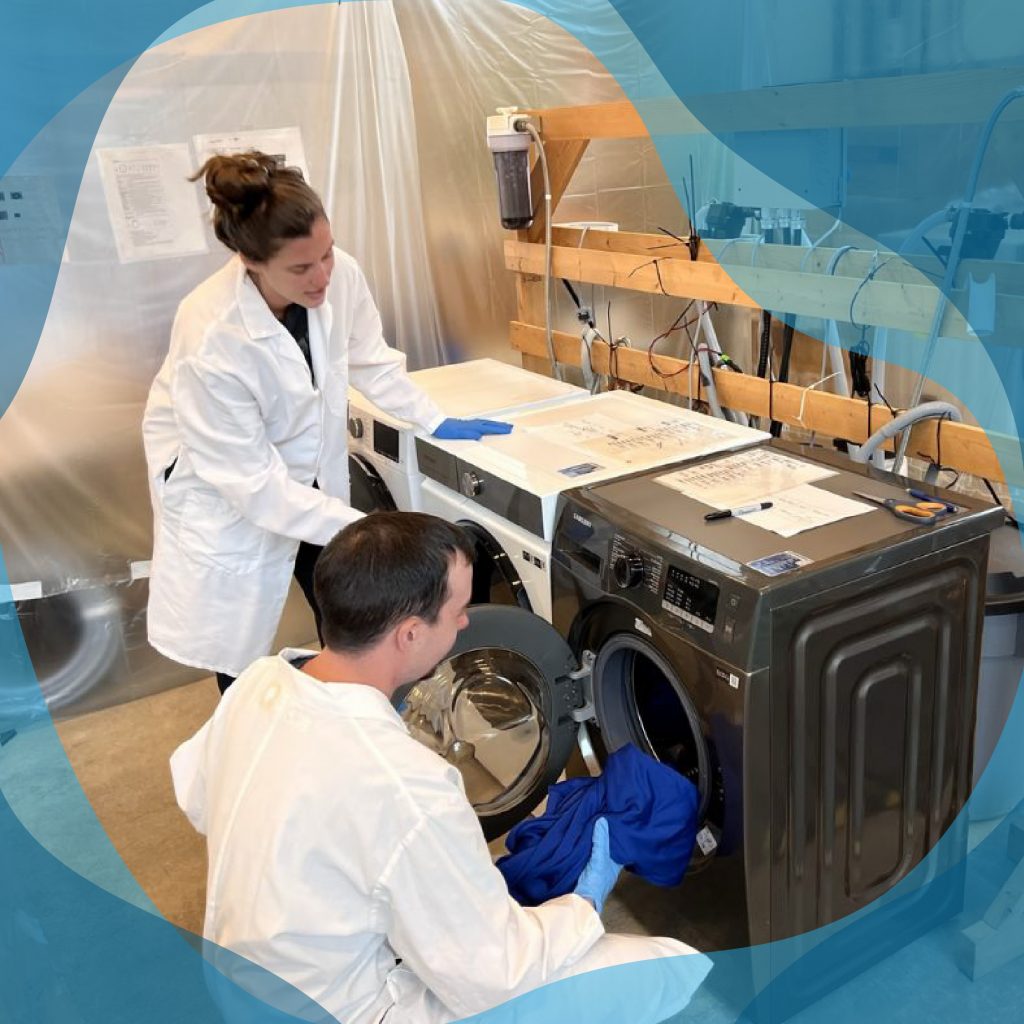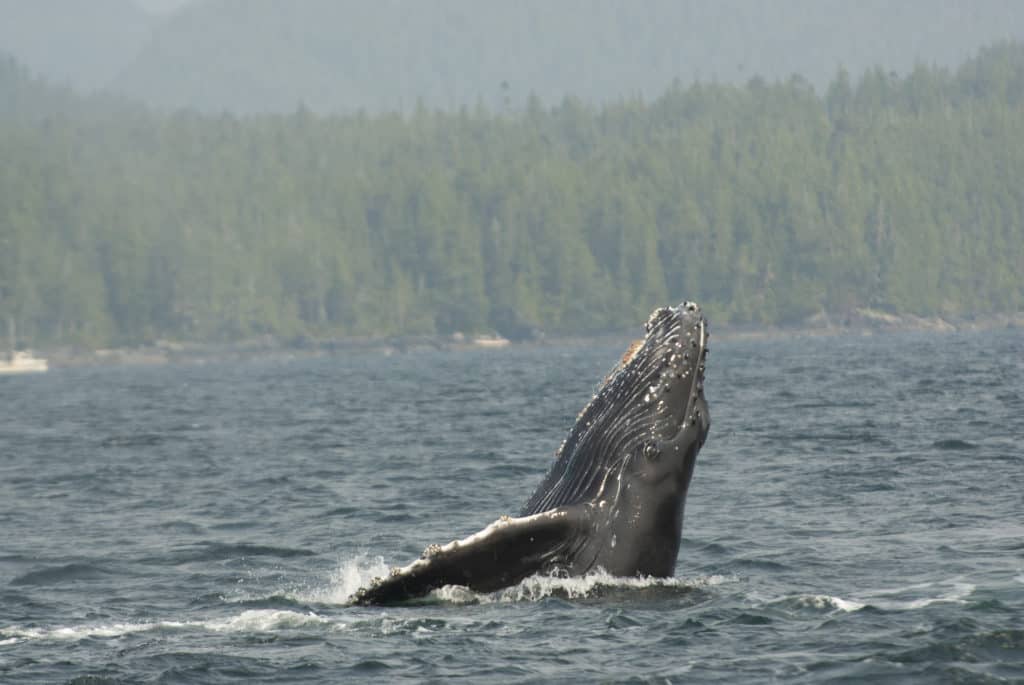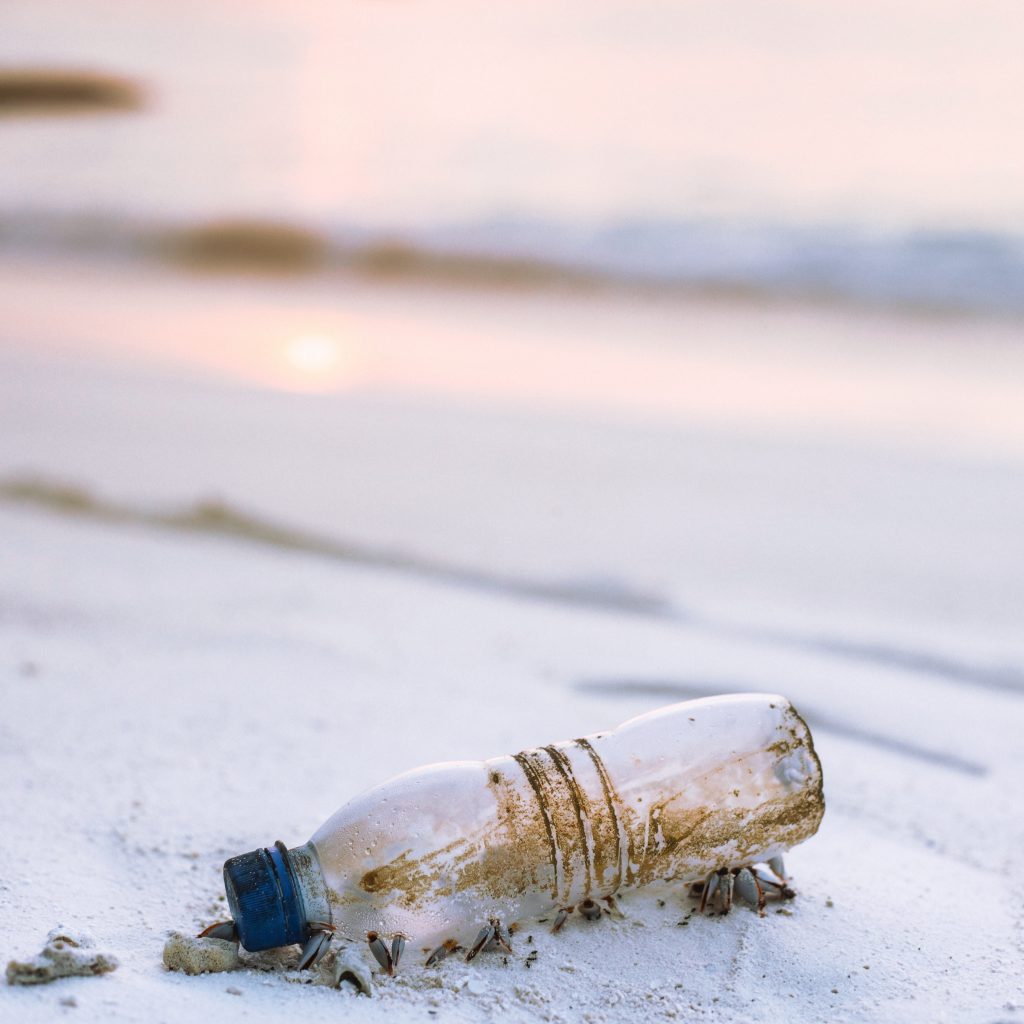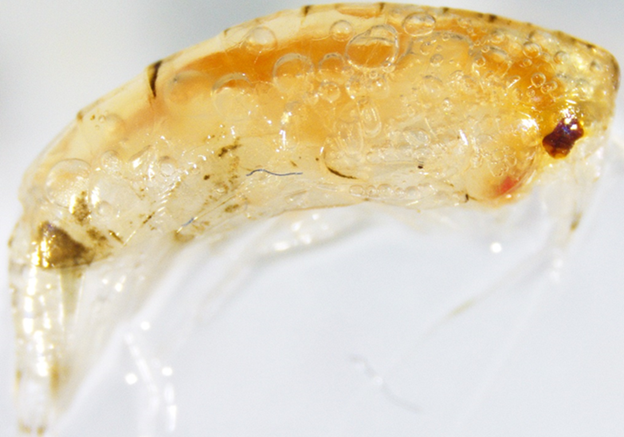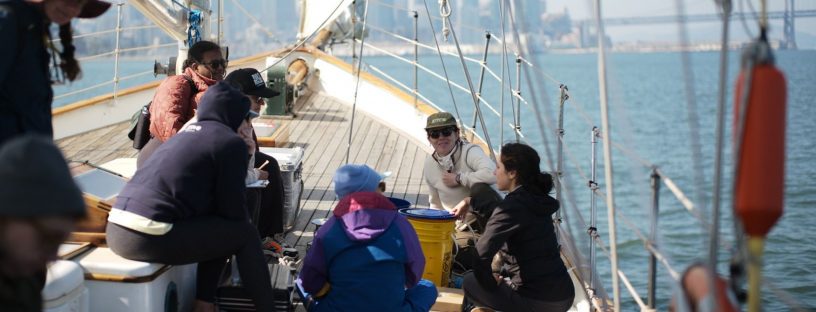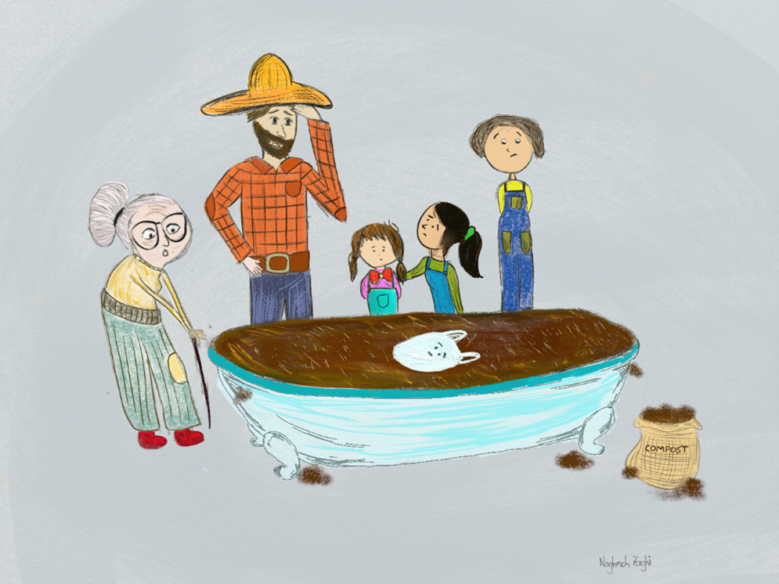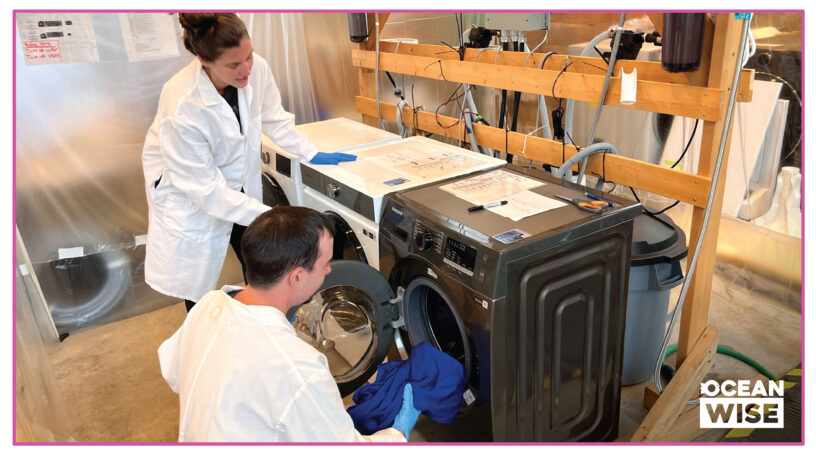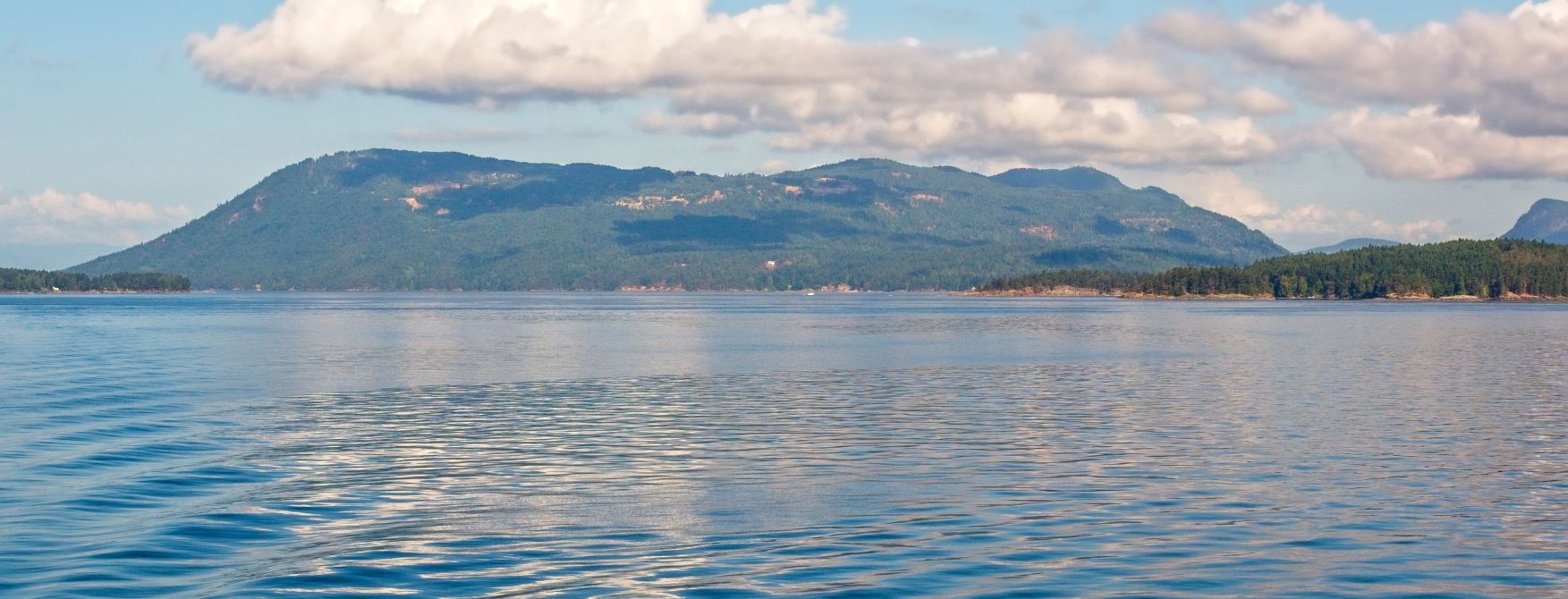
Microfibers in the Ocean: Impacts on Zooplankton and the Food Web
The Ocean Wise Plastics Lab recently published findings from new microfiber research, conducted in collaboration with our partners at the University of British Columbia. In this blog, we explore the role of zooplankton in the ecosystem, and introduce the impacts of microfibers.
What are zooplankton and why do they matter?
Zooplankton are a group of small marine organisms that float near the water’s surface and travel by being swept along currents, eating phytoplankton (marine algae) and other zooplankton. Healthy zooplankton are vital to the ecosystem. These tiny creatures affect the health of their predators, like juvenile salmon, herring and groundfish. Relationships between predators and prey in an ecosystem is known as a food web – anything happening lower down (where zooplankton are) can have a ripple effect on higher levels.

Amphipod (Cyphocaris challengeri) with an ingested microfiber.
What are microfibers and why do they matter?
Microfibers are fibers less than 5 millimetres long, known for shedding from clothing during washing. By our estimate, American and Canadian households combined release the weight of ten blue whales in microfibers through laundry washes every year. To reduce this pollution, we can wash our laundry on cold and gentle cycles and install a microfiber filter – more on that here!
The problem with microfibers (aside from the fact that their shedding means clothes don’t last as long!) is that they end up in the ocean. Through laundry, microfibers make their way into the aquatic ecosystems. They’ve been found in plankton, seafood, in the stomachs of marine mammals, and at depths of up to 1,000 meters.
How do microfibers affect ocean ecosystems?
Unfortunately for zooplankton, microfibers look like their normal food. Since zooplankton can’t tell the difference, they eat the fibers. This means zooplankton feel full, when they haven’t eaten food that provides the nutrients they need to survive.
Plankton poop is key to the marine food web, and is also a big driver of the under-sea carbon cycle (how the ocean helps store carbon). Other bottom-dwelling creatures such as worms, crabs, bottom-feeding fish, sea cucumbers, and sea stars rely on plankton poop for their nutrition to keep the ecosystem healthy. Plankton poop is not as rich in nutrients when the plankton has been eating microfibers, so these bottom-dwelling creatures don’t get the nutrients that they typically would.
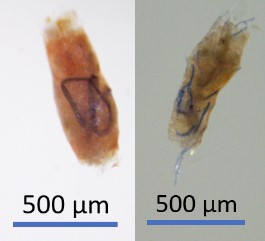
Polyester microfibers visible in plankton poop in a microscope image.
What did our study find?
Our study showed that:
- Zooplankton return to the deep ocean with microfibers found at the sea surface in their guts. Through their poop, they make these microfibers available to other deep animals.
- Since the weight of polyester microfibers is heavier than their usual nutrient-rich food of amphipods, zooplankton poop sinks faster – so carbon and nutrients are transported away from the near surface and pushed down to the deep ocean. The exact consequences of this phenomenon are unclear, but it raises the question: what is the relative impact of microfibers on the near-surface and deep ocean? We expect future research to follow up with a more comprehensive study of this dynamic.
In this study, we created a miniature version (a microcosm) of British Columbia’s Strait of Georgia in our lab. Using this microcosm, our researchers were able to tell that indeed, amphipods mistake microfibers for food, eating more fibers when there are more available. Amphipods that eat a lot of microfibers won’t get the nutrients they need, and they won’t make nutritious food for the predators that eat them. In this way, microfibers become a problem for predators of the zooplankton like juvenile salmon, herring and groundfish. As microfibers continue to increase in the ocean, it may result in effects in marine food webs. Our study adds to growing evidence of the harm that microfibers cause in ocean ecosystems.
What can we do about microfibers in the ocean?
To prevent the shed of microfibers into our ocean, we have two recommendations.
- Wash your laundry on cold and gentle! Our research has shown that this can reduce microfiber shedding by up to 70%!
- Try to buy less items in the first place. Less demand for new items equals less fabrics produced, and the number of microfibers that will shed as a result.
For further reading about our research, check out the recently published paper titled, “Microcosm study of the effects of polyester microfibers on the indigenous marine amphipod (Cyphocaris challengeri) in the Strait of Georgia (BC, Canada)”. Ocean Wise is grateful to UBC Prof. Maite Maldonado for her thought leadership on microplastic pollution in British Columbia, and for supporting this research. This research project was made possible by funding from Fisheries and Oceans Canada, Environment and Climate Change Canada, and in-kind support from the Ocean Wise Microfiber Partnership.
Posted December 5, 2023 by Cayley Elcombe
